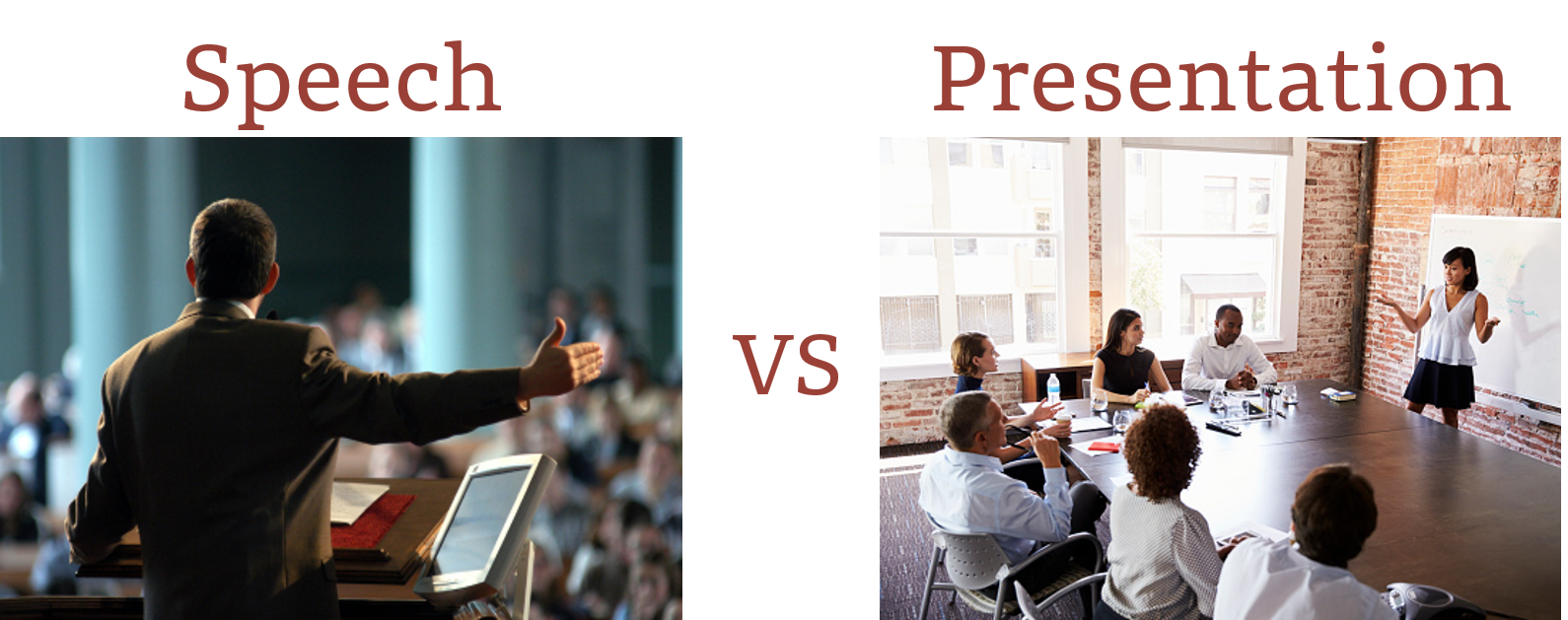
- Dale Ludwig Meetings, Myths Debunked, Presentations, The Orderly Conversation, Virtual Communication
One of the most important things for business communicators to understand is the distinction between a speech and a presentation. They are not the same.
The problem is not that people struggle to articulate the difference between the two or have a hard time distinguishing one from the other as an audience member. The problem is that when it comes to preparing for a presentation, presenters follow the rules for speechmaking, in effect tossing speechmaking and business presenting into the same “public speaking” bucket.
That’s a big problem.
Here’s what I mean. Think about the last presentation you delivered. Did you use any of these techniques?
- Scripting and memorizing the first few minutes of your presentation as a way to get over your nervousness
- Rehearsing delivery in front of a mirror or a friend in an attempt to perfect your delivery
- Planning to open with a shocking statement or surprising fact
- Including text on your slides that you did not intend to look at during your presentation
If your answer is yes to any of these ideas, you’re using speechmaking techniques that are getting in the way of a successful presentation.
What we need is a new way to think about business presentations. Unlike speeches, presentations are business conversations—spontaneous and interactive. While they are planned, they aren’t scripted. A presenter’s success depends on their ability to engage the audience in genuine conversation. Once engaged, they are able to gauge the audience’s comprehension and interest, zigging and zagging when necessary, just like people do in everyday conversation.
That’s why we have redefined business presentations as Orderly Conversations
They are orderly because they are planned in order to achieve a specific goal as efficiently as possible. They are conversations because their success depends on the give and take between presenter and audience.
Planning is about anticipating the conversation. Delivery is about adapting what was planned to the conversation taking place.
So, what should you do if the speechmaking techniques listed above won’t work?
Preparation – The Orderly Conversation Demands It
I know that I said right above this that rehearsal is a speechmaking technique, and now I’m telling you to prepare, which may be a little confusing. There’s a difference between the two. Rehearsal, in this case, means striving for perfection. In a business environment, your audience doesn’t care about perfection; they care about effectiveness. Preparation, as I’ve defined it below, helps you achieve the flexibility and agility with your material that will lead to a meaningful Orderly Conversation.
First and always, focus on your audience instead of scripting and memorizing as a way to reduce your nervousness. Once you and they are truly engaged in the conversation, that nervousness will go away.
Give up the goal of perfection. Use the time you have before your presentation to get comfortable with your content and its flow. Think of different ways to explain your ideas—explanations you might be able to use in response to audience questions or concerns.
Don’t try to shock your audience or grab their attention. Focus on making sure that what you say when you begin is a natural extension of what came before. Maybe that means a reference to what just happened in the meeting room or what happened the last time this group met.
Create slides that are easy to deliver. Slides should serve you and your audience. If you create them with an eye toward delivery, you will keep them simple, readable, and concise.
Finally, remember that your business presentations are a process to be managed, not a product to be delivered. Approaching them as Orderly Conversations will help you do that.
Transitioning it to the Virtual World
How do you start a business conversation in the online world?
If your presentations take place mostly in a virtual environment, you can adapt the ideas presented here. Virtual presentations come with their own challenges, but if you focus on the idea of the Orderly Conversation—connection with your audience and getting business done efficiently and effectively—you are well on your way to effective virtual presentations.
What’s Next?
Check our resource page for regular educational posts on topics related to the Orderly Conversation and more.


